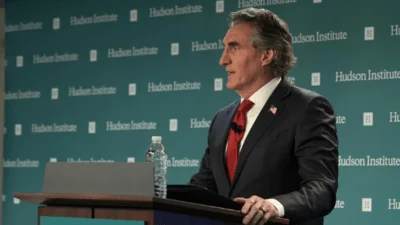Since the Treasury Borrowing Advisory Committee (TBAC) last convened in July, financial markets have experienced low volatility. This has been attributed to reduced uncertainty and steady economic activity in both the United States and globally. The ongoing government shutdown has also played a role by delaying key U.S. economic data releases.
Over the past three months, equity prices have continued to rise, with the S&P 500 up 16.3% for the year. Treasury yields have decreased following Federal Reserve rate cuts in September; ten-year yields dropped about 40 basis points to 4.0%, while two-year yields fell to around 3.5%. The U.S. dollar has remained stable after earlier depreciation.
Asset price volatility measures remain subdued, with implied volatility on interest rate swaps at their lowest since 2021 and equity market volatility, as measured by the VIX index, staying low since July.
The TBAC noted that the government shutdown may be contributing to this stability due to delays in economic data releases, which could change once data becomes available again. The lack of data is also drawing attention to how inflation-linked securities are managed when Consumer Price Index (CPI) figures are missing.
Before the shutdown, economic growth was slowing but resilient. Real GDP grew at an annualized rate of 1.6% in the first half of 2025, down from 2.6% in late 2024. Consumer spending remained solid and business investment was supported by spending on electronics tied to artificial intelligence development. However, housing sector activity weakened due to high prices and mortgage rates.
Job growth slowed more than other indicators of economic activity, with nonfarm payrolls averaging just 29,000 new jobs per month from June through August. The unemployment rate held steady at 4.3%. Weekly jobless claims data continued during the shutdown and showed no sharp deterioration in labor market conditions.
Inflation remains above target levels; core Personal Consumption Expenditures (PCE) inflation was projected at 2.8% year-over-year for September. Goods price inflation has been influenced by tariffs but not as much as some had forecasted. Shelter inflation has moderated, while some service categories remain strong.
Federal Reserve officials assessed increased downside risks to employment at their September meeting and cut policy rates by a total of 50 basis points over September and October. While projections suggest further cuts may come in 2025, Chair Powell indicated that future decisions will depend on incoming data.
Deficit projections for fiscal years 2026 and 2027 were revised downward by $106 billion compared to previous estimates but remain high at $1.94 trillion and $2.05 trillion respectively according to dealer surveys. Tariff revenues now play a larger role in these forecasts as markets watch trade negotiations closely.
Short-term interest rates showed upward pressure in October due to factors such as increased T-bill issuance after raising the debt limit and changes in money market fund behavior ahead of expected Fed cuts.
Treasury’s cash balance reached $1 trillion at the end of October as it maintains enough funds for near-term needs, sometimes exceeding quarter-end assumptions due to timing of payments and maturities.
The TBAC reviewed its Optimal Debt Model amid higher expected debt service costs caused by rising deficits and expanded term premiums since 2019. The current issuance mix is close to what is considered efficient; increasing reliance on T-bills reduced costs but raised volatility.
The committee recommended keeping nominal coupon sizes and TIPS issuance unchanged for now but acknowledged that increases might be needed in fiscal year 2027 depending on financing requirements going forward.
"The Committee believes that current projections could warrant increases in coupon issuance in FY2027," stated Deirdre K. Dunn, Chair of the Treasury Borrowing Advisory Committee.





